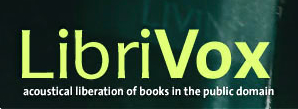Earlier this week, Xe Sands, fellow audiobook narrator and founder of the Going Public Project, posted about Banned Books Week, which this year is 22-28 September. She said that Going Public would have a special posting tomorrow, 27 September, of banned books.
Excited by this idea, I spent a few hours searching through lists of banned books on numerous web sites to find something I wanted to record. I was amazed to see the broad range of banned and challenged books, including a long list of classical titles. People complain about and attempt to censor material for a variety of reasons.
Many of these books are still under copyright, so I can’t record them. However, I found a historic and significant pamphlet that is directly connected to my life today: Margaret A. Sanger’s FAMILY LIMITATION, first published in 1914.
You see, I am child-free by choice. I am grateful to live in a time period where I not only can make that choice but have immediate access to information about birth control and appropriate medical care.
If I had lived 100 years ago, though, it would have been extremely difficult for me to learn how I could prevent pregnancy. In my research, I learned about the Comstock Law of 1873. The Comstock Law (the Federal Anti-Obscenity Act) banned the mailing of material considered to be “lewd”. “indecent”, “filthy”, or “obscene”. It also forbade distribution of birth control information.
My research led me to a fascinating blog devoted to Margaret Sanger’s work and papers. In this interesting article, I learned Sanger was a nurse in the NY slums who believed that women had a right to know about their reproductive health. She first published her pamphlet in 1914.
The next year, her husband was jailed for distributing this pamphlet which describes and advocates various methods of contraception. Sanger fled the country to avoid prosecution. When she returned, she started the American Birth Control League, which merged with other groups to become Planned Parenthood.
In 2012, the Library of Congress included Sanger’s pamphlet in its exhibit of Books that Shaped America. This exhibit featured 88 works that shaped American life and thought.
For these reasons, I am very proud to present the entire recording of the FAMILY LIMITATION pamphlet (sixth edition, published in 1917) by Margaret A. Sanger in celebration of Banned Books Week.
